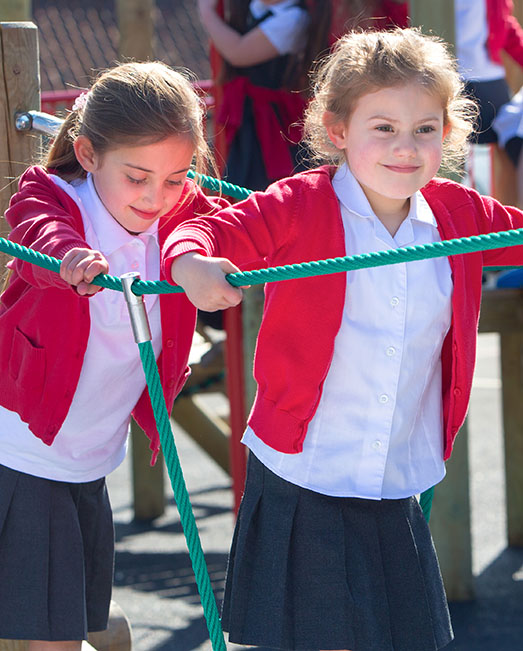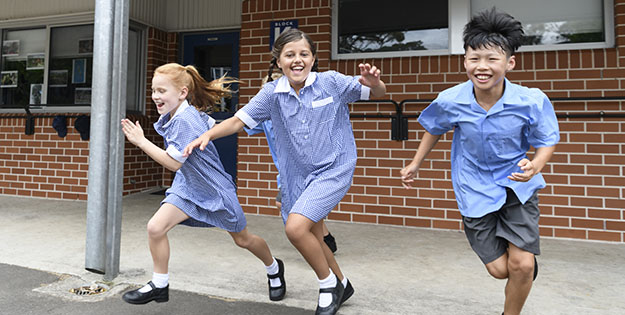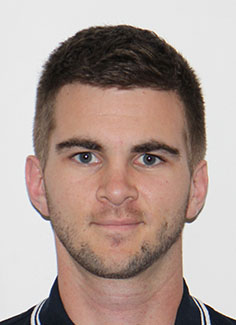Lifestyle
Copyright@ Australian Catholic University 1998-2026 | ABN 15 050 192 660 CRICOS registered provider: 00004G | PRV12008
Copyright@ Australian Catholic University 1998-2026 | ABN 15 050 192 660 CRICOS registered provider: 00004G | PRV12008

There’s a popular meme doing the rounds that pokes fun at younger generations and the idea they spend all day sitting down glued to their screens. The cartoon depicts a mother in 1995. She stands at her doorstep dragging her sweaty young son in from play, through the front door and inside to the comfort of home. Alongside it, a second cartoon, from 2020. This depicts another mother at her doorstep, but she’s dragging her slightly chubby son in the opposite direction, off his device and outside to play in the fresh air.
It’s just a crude ‘kids these days’ meme, of which there are many. But research suggests there’s a kernel of truth in it.
Studies exploring the physical fitness of today’s children show they’re up to 20 per cent less fit and active than their parents were at the same age.
This is cause for concern for public health experts, who know that active kids are stronger, healthier and more confident in their bodies.
“Active children see many developmental benefits with things like bone density, muscles, coordination, fundamental movement and gross motor skills — all things that are best developed as a child,” says ACU’s Dr Taren Sanders, whose research focuses on physical activity in young people.
Childhood is also a time when many lifelong health-related habits are established.
“One thing the evidence is clear on is that those who are active at a young age and who find physical activity fun are more likely to be active throughout their life course,” says Dr Sanders, Deputy Program Lead at the Institute for Positive Psychology and Education (IPPE).
“So they’re setting themselves up to be active as adults, and really importantly, they’re more likely to find continued enjoyment in physical activity as they age.”
Exactly why so many modern-day kids are sedentary is multifactorial, with lack of green space, competing curriculum demands and low physical literacy all playing a role.
But there’s one barrier to physical activity that tends to wear most of the blame.
You don’t have to look very far to find someone blaming smartphones and tablets for a host of society’s ills.
To be clear, there’s no doubt that excessive screentime can be harmful, and parents of infants, in particular, need to be mindful of the risks.
But Dr Sanders argues that the main harm doesn’t come from the screentime itself; rather, it’s from the lack of physical activity that results.
“While the research around screentime is a bit of a mixed bag, the evidence around sedentary behaviour — of which screentime is mostly a form of — is very reliable,” he says.
“It tells us that long, unbroken periods of sitting down are harmful to kids: it increases the risk of things like obesity, so if they’re sitting down for hours watching Bluey or some other TV show, they’re missing out on the benefits of physical activity, and they’re also more likely to be snacking, so it’s easy for them to polish off a bag of chips.”
It’s important to note, however, that not all screentime is the same.
In a wide-scale longitudinal study conducted by Dr Sanders and his IPPE colleagues, passive screentime (watching TV or YouTube videos) was found to have “mostly detrimental effects”, while educational screentime (doing homework or using learning apps) had “slight benefits in school achievement and persistence”.
The problem with the public debate on digital technology is that often very different screen-based activities are lumped under the umbrella term of ‘screentime’.
“Technology use can be very diverse, and so it’s really important that we distinguish between the different types of screentime, and also that we don’t overemphasise its effects,” Dr Sanders says.
“The advice I always give is parents that, rather than stressing too much about the quantity of the screentime, think more about the quality.
“There’s a balancing act between giving children enough of the type of screentime which can be beneficial to them, but also ensuring we break it up with some physical movement, so we’re not exposing them to the harms of excessive sedentary time.”
Anyone who’s witnessed a primary school playground at lunchtime knows that most children are naturally physically active.
“The oval could be on fire and some kids would still want to go out and play netball or soccer,” Dr Sanders says. “There’s little you can do to stop them being active – they just want to run around playing sport or chasing each other and moving around in some way.”

But even the most active of kids sometimes face barriers to physical activity.
They might have limited access to a backyard or a park close to home, forcing them to spend more hours cooped up inside after school or on weekends and school holidays.
Others have personal barriers: they don’t find physical activity enjoyable or lack the confidence, preferring sedentary activities like drawing, playing Lego or reading books.
Dr Sanders concedes that getting these kids moving can be a challenge. The goal, he says, is to find a way to motivate them to engage in any type of physical activity, whether it’s dancing or chasing bubbles or moving freely in imaginative play.
“With kids who aren’t easily motivated to be active, we need to be more mindful of reducing as many of the barriers to physical activity as possible, so that at the moment they are motivated, nothing is stopping them from doing it,” he says.
“If you’re doing something together, that means giving them more than one choice, so if they say, ‘I don’t like riding a skateboard’ or ‘I don’t feel like playing netball’, you can always suggest a different activity that they’ll find fun and be more confident engaging in.
“And when trying something new like soccer or cricket or some other sport, remember that the rules matter a lot less than the movement, so just give them a chance to enjoy it and an opportunity to experience success.”
Perhaps counter-intuitively, screentime can be a novel and effective way of getting even the most of hesitant of kids moving.
In recent years there’s been a proliferation of online instructional videos offering anything from active lessons to dancing sessions and kids’ yoga classes.
Among the most effective resources available online are energizer ‘brain break’ videos, a major component of the ACU-led iPLAY physical activity training program for primary school teachers.
These activities don’t require a lot of space and involve higher-intensity physical activity, which has been linked with positive outcomes in young people.
They also help children to develop skills, which can be useful, says Dr Sanders, because it helps kids to grow more confident with physical activity.
“We know that kids who struggle to develop competency in their fundamental movement skills like throwing, catching and kicking tend to struggle to be physically active, both as a child and then later on in life,” he says.
“If you’re no good at kicking a ball when you’re at school, you are unlikely to go and join the under 21s team when you get out of school as well. By providing children with opportunities to learn new skills, you’re getting them active and you’re also helping them to develop a skill set that will stand them in good stead later in life.”
And as many experts in this space have pointed out, being active doesn’t only have physical benefits for children – it can also lead to higher self-esteem and better learning outcomes.
“There are so many reasons why kids should get moving, and that’s why it’s really important that we provide those opportunities and that we make it fun,” Dr Sanders says.
“There’s no wrong way to be physically active. You can do it whatever way suits you and you’ll still accrue a benefit, and you’ll continue accruing those benefits as long as you keep on moving.”
The iPLAY program, developed by ACU’s Institute for Positive Psychology and Education for the NSW Government, now has a range of physical resources for parents on its homepage.
It includes videos and parent education kits with information on the importance of afterschool sport, parental role-modelling and being active with children.
iPLAY’s “healthy eating, recipe ideas and sport techniques” resource includes advice on kids’ nutrition and hydration and a range of ideas for getting active, including sporting techniques like hitting a tennis ball or shooting a basketball.
The website contains a “family activation pack”, with detailed instructions on teaching children how to perform fundamental movement skills and several games that require these skills.
Surveys have consistently found that screen time is the number one health concern parents have for their children. iPlay offers some facts about screentime behaviour and strategies on how parents can manage the use of technology at home.
iPlay has been rolled out to more than 35,000 primary school students in 150 schools across NSW.
Dr Taren Sanders is Deputy Program Lead at ACU’s Institute for Positive Psychology and Education (IPPE). His research focusses on what determines physical activity behaviour in children and young people, the benefits of physical activity, and how measurements of physical activity can be improved.

Copyright@ Australian Catholic University 1998-2026 | ABN 15 050 192 660 CRICOS registered provider: 00004G | PRV12008